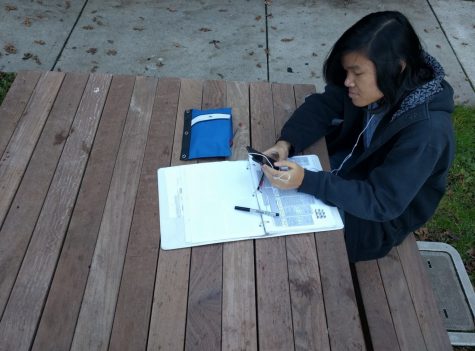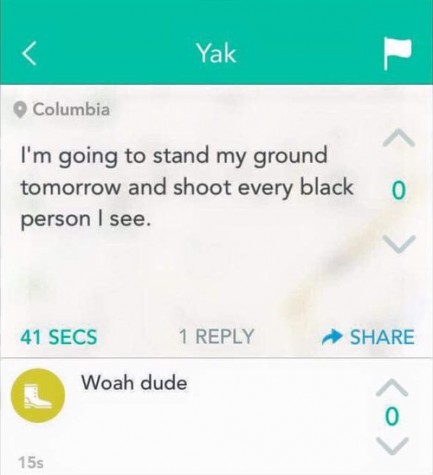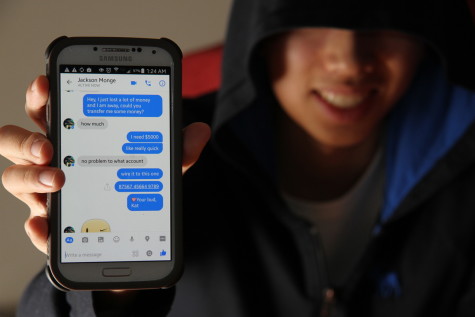“When I was your age, we only had one phone in the house.”
“When I was your age, we spent time with our families.”
“When I was your age, we didn’t text in class.”
Every kid has heard it a billion times before—from their parents, grandparents, and teachers. The “kids these days” and “when I was your age” arguments never seem to end and are met with an adolescent’s eye roll every time they’re presented.
Something “kids these days” often do not realize is the difference between their generation and previous ones. The United States Census reported in 1985 that only eight percent of households owned computers. By 2012, that number increased to 79 percent.
Computers are not the only way to access the internet; the popularization of smartphones has made the internet easily accessible for many. In 2011, 23 percent of American teenagers had a smartphone. By 2015, only four years later, that number increased to 73 percent, according to Pew Research Center.
This evolution of technology has changed the way people interact with one another. Traditionally, social interactions have formed friendships. For teens, these interactions used to take place at school or during extracurricular activities. Now, more than ever, those interactions are being held on the internet.
Teenagers are the most prominent age group on the internet, with 95 percent of them being online. They spend most of their time on social media; 76 percent of teens use apps or websites like Facebook, Instagram, and Snapchat. According to Pew Research Center, 55 percent of teens spend time with their closest friends online, and 83 percent of teens that use social media say it makes them feel more connected with their friends’ feelings.
Despite all the interactions available through technology, many people still believe traditional interactions are critical. Sam Bellusci, a sophomore who goes to a physical classroom only a few times a week, thinks in-person communication is crucial for a strong friendship.
“A lot of kids don’t understand how important real-life interaction is,” Bellusci said. “My connection with my best friend is sentimental and even though we talk mostly online, I don’t think you can find [something like our friendship] with someone you’ve never met [in person].”
This view is shared among teens who primarily talk with real-life friends on the internet.
Chloe Stanks, who moved away from her best friend in Colorado, said, “A lot of the time, I’m too lazy to type what I mean. When we talk in person, our conversations are longer and more meaningful.”
But there is a growing number of people who only know their friends through a screen. These are called “internet friends,” and they often connect online through shared interests, like books, movies, or video games.
“[The internet] gives me a safe space to express how I feel, which I can’t do as casually at home or with people I don’t know well,” said Anna Smith*.
Smith has made several online friends because of her involvement in internet games, which are typically created with the intention of connecting like-minded teens across the world.
According to a study by Ellen Niemer, most parents view online connections such as Smith’s as a mystery. Internet friendships can seem dangerous to parents; catfishing and falsifying an identity are easy to do online, and teens can be easily persuaded to believe that their so-called friend is who they say they are, even when they aren’t.
There are several websites, like Not4Dating, which exist to help users form friendships online. However, they restrict their users to a minimum age of 18. Not4Dating’s safety section says, “Don’t share your full name, personal phone numbers, email, address, or any other identifying information while messaging others within the site until you are comfortable doing so.”
Restrictions on teenagers, such as age and parental guidance, do not stop them from reaching out to others online and making friends. In a Pew Research study, 57 percent of teens reported having made a friend online.
For many teens, online communities have a positive impact. Of all teen social media users, 68 percent report receiving support on social media during challenging times. Although 88 percent of teens think other users overshare online, 85 percent believe the internet is an opportunity for people to be who they cannot be offline.
Halle Donovan, a sophomore, said, “I think if I felt negative about myself, social media would help because it shows what a big community there is. There are always people who have gone through what you’re going through.”
The internet is a particularly meaningful place for LGBTQ youth. According to a study by the Gay, Lesbian, and Straight Education Network, more than half of LGBTQ youth who lack community groups near them use the internet to connect with others in the community. The teens reported these friendships as more supportive than in-person ones.
Smith, who also identifies as LGBTQ, said, “I think social media made me more comfortable talking with my friends about sexuality and with myself as a person.”
The world is getting smaller because of technology; most people have internet access, and communication is easier and faster now than it has ever been before. The dangers of being online are presented by parents, teachers, and even the internet itself.
Still, as long as teens know how to keep themselves safe and recognize positive communities, the internet can become a place for social interactions much like those in real-life.
*Some sources requested to have their names changed in order to remain anonymous.












